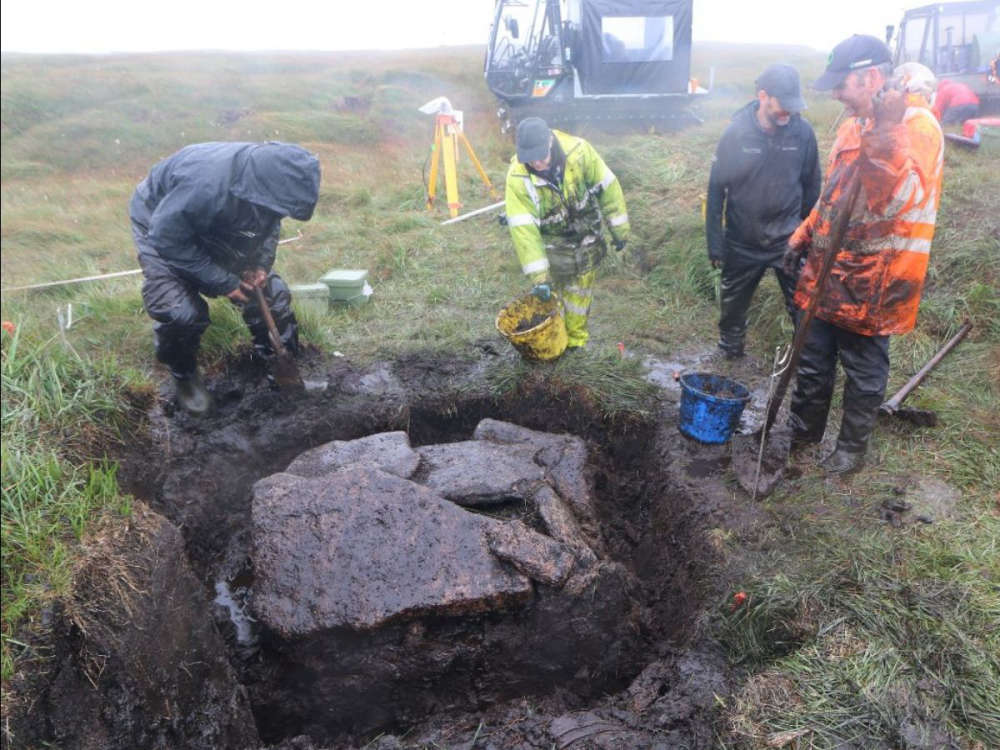
Archaeologists have made ‘stunning’ discoveries after excavating an Early Bronze Age burial cist at Cut Hill, one of Dartmoor’s most isolated hills.
Led by Dartmoor National Park Authority painstaking work revealed an exceptional cist - a stone-built box used to bury the dead in prehistoric times - containing well-preserved wood and a host of other material yet to be identified.
The Authority is now seeking funding for micro-excavations of the cist and the future conservation of any artefacts, and is encouraging people to support this exciting project by choosing to Donate for Dartmoor.
The discovery has parallels to the cist unearthed at Whitehorse Hill in 2011. The finds changed our understanding of Early Bronze Age life on Dartmoor.
Cut Hill stands at 603-metres high – one of five peaks on Dartmoor that's over 600m – and lies within the military firing ranges.
Cist excavations were prompted when local historian Paul Rendell reported to the Authority that the feature was eroding out of the peat.
Site surveys and analysis, including radiocarbon dating of charcoal from inside the cist, gave a date of around 1,800BC - or 3,800 years old.
In May, Dartmoor National Park Authority unanimously supported a full archaeological intervention.
The dig took place from 9 – 12 August with the team enduring Dartmoor’s notoriously changeable weather, from bright sunshine through to thick fog and persistent rain.
Work was rewarded when excavations revealed a prehistoric cist of around one-metre square – over twice the size of the Whitehorse Hill cist – and topped with three granite capstones.
Dartmoor National Park Authority Archaeologist and Excavation Director Dr Lee Bray said: “It’s a stunning discovery with the potential to be every bit as fascinating as the finds at Whitehorse Hill.
"We were all pretty speechless when we lifted the capstone and looked inside. Not only is the cist bigger than we expected, but it contained multiple pieces of wood that appear to have been deliberately shaped and cut. This prompts more questions: could the wood have been an object that was dismantled and deliberately placed inside the grave? If so, what was it and who did it belong to?
"The volume of material under the wood reaches a depth of about 30cm so there's every chance it contains objects or artefacts we can't see yet. The next stage is for micro-excavations to determine what's in there. It's very detailed work that'll take time to complete but we're all very excited about it."
The team worked respectfully to wrap and seal the cist to conserve its contents. A special all-terrain vehicle was used to carefully transport the cist off the moor. It is now in the care of the Wiltshire Conservation and Museums Advisory Service, part of Wiltshire Council, where it will undergo micro-excavations.

 Criminal investigation into suspended Chief Constable dropped
Criminal investigation into suspended Chief Constable dropped
 Devon families receive their primary school place offers
Devon families receive their primary school place offers
 Theft of Quad Bike / Livestock Trailer and / Farm Tools - Tiverton and Withleigh Area
Theft of Quad Bike / Livestock Trailer and / Farm Tools - Tiverton and Withleigh Area
 Stay vigilant for ticket fraud ahead of top events and concerts this summer.
Stay vigilant for ticket fraud ahead of top events and concerts this summer.











